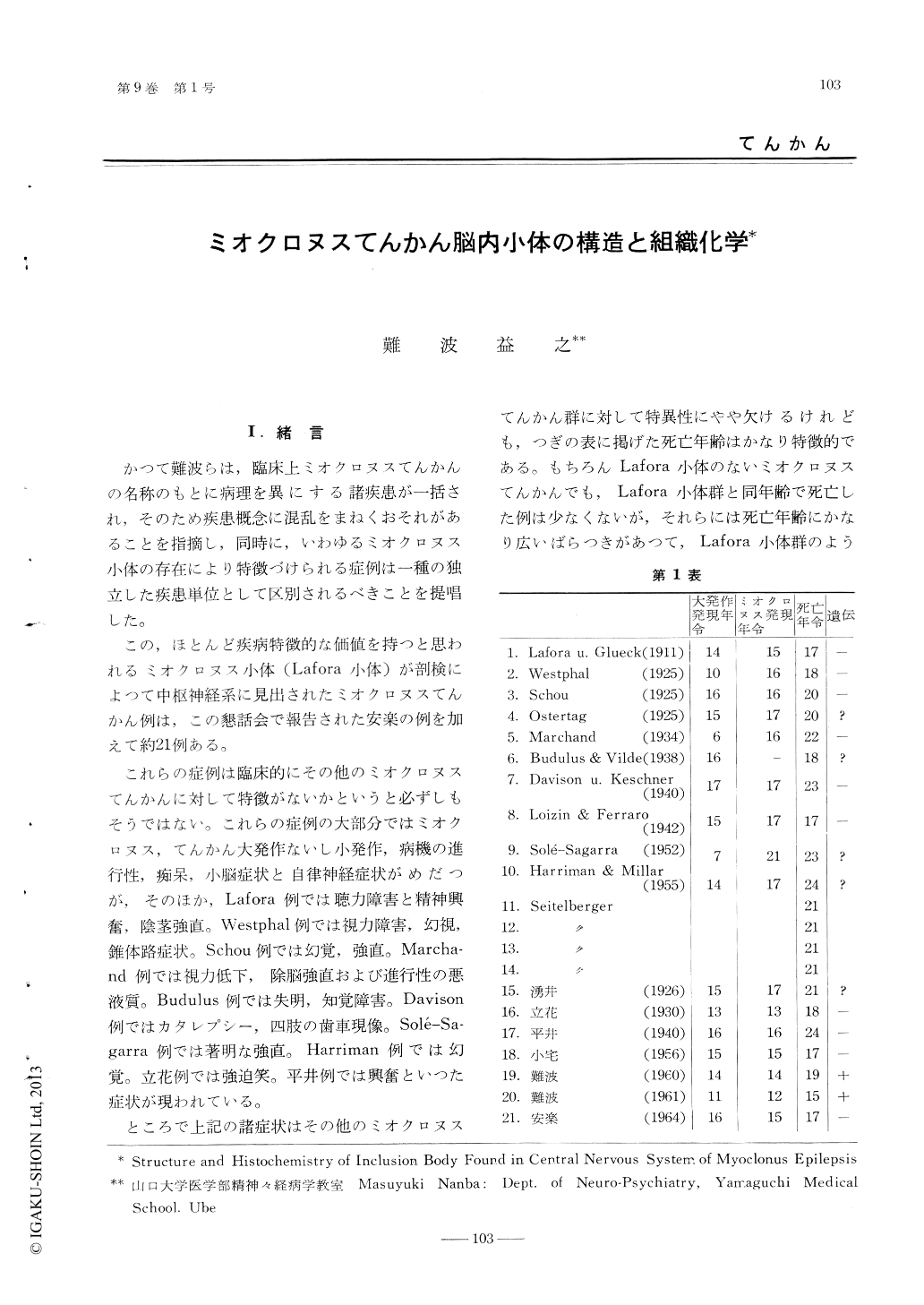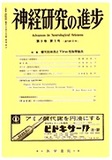Japanese
English
- 有料閲覧
- Abstract 文献概要
- 1ページ目 Look Inside
I.緒言
かつて難波らは,臨床上ミオクロヌスてんかんの名称のもとに病理を異にする諸疾患が一括され,そのため疾患概念に混乱をまねくおそれがあることを指摘し,同時に,いわゆるミオクロヌス小体の存在により特徴づけられる症例は一種の独立した疾患単位として区別されるべきことを提唱した。
この,ほとんど疾病特徴的な価値を持つと思われるミオクロヌス小体(Lafora小体)が剖検によつて中枢神経系に見出されたミオクロヌスてんかん例は,この懇話会で報告された安楽の例を加えて約21例ある。
Autopsy of myoclonus epilepsy counts 7 cases in Japan. The most frequent appearance, the auther experienced, and in clinical syndrome, is myoclonic jerks, major fits, minor fits, ataxia, progressive diminution of intelligence, and vegetative dysfun-ction. The most characteristic common point is that death took place at the age from 17 to 24 except one died in an accident.
In two cases we could not find inclusion body except central nervous system. In heart fiber and liver cell there is a similar substance which Ha-rriman and Oyake reported.
Inclusion body is in the perikaryon of nerve cell and dendrite and in cytoplasma of neuroglia, how-ever in gray matter there is small particle whose relation with them is not clear.
The most convenient method to see the morpho-logical characteristics of inclusion body is the exa-mination by phasencontrastm kroscope of "non dye-ing" specimen.
In histochemical reaction, we saw the existence of phospholipids and mucopolysaccharids. In inner layer there suggests acidmucopolysaccharides. Mo-reover, there is the possibility of existing of small quantity of protein, iron and of some unknown sub-stance.

Copyright © 1965, Igaku-Shoin Ltd. All rights reserved.


